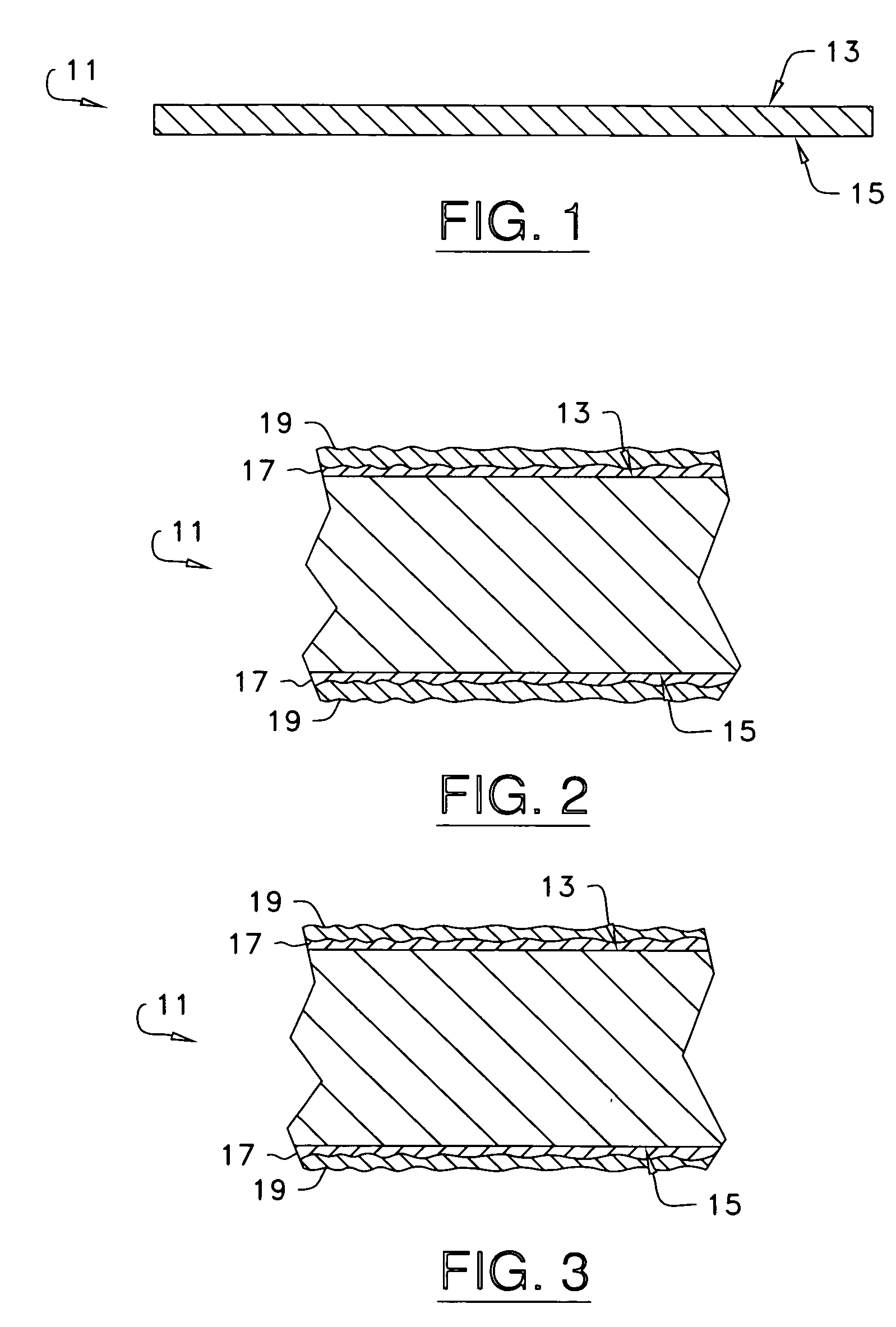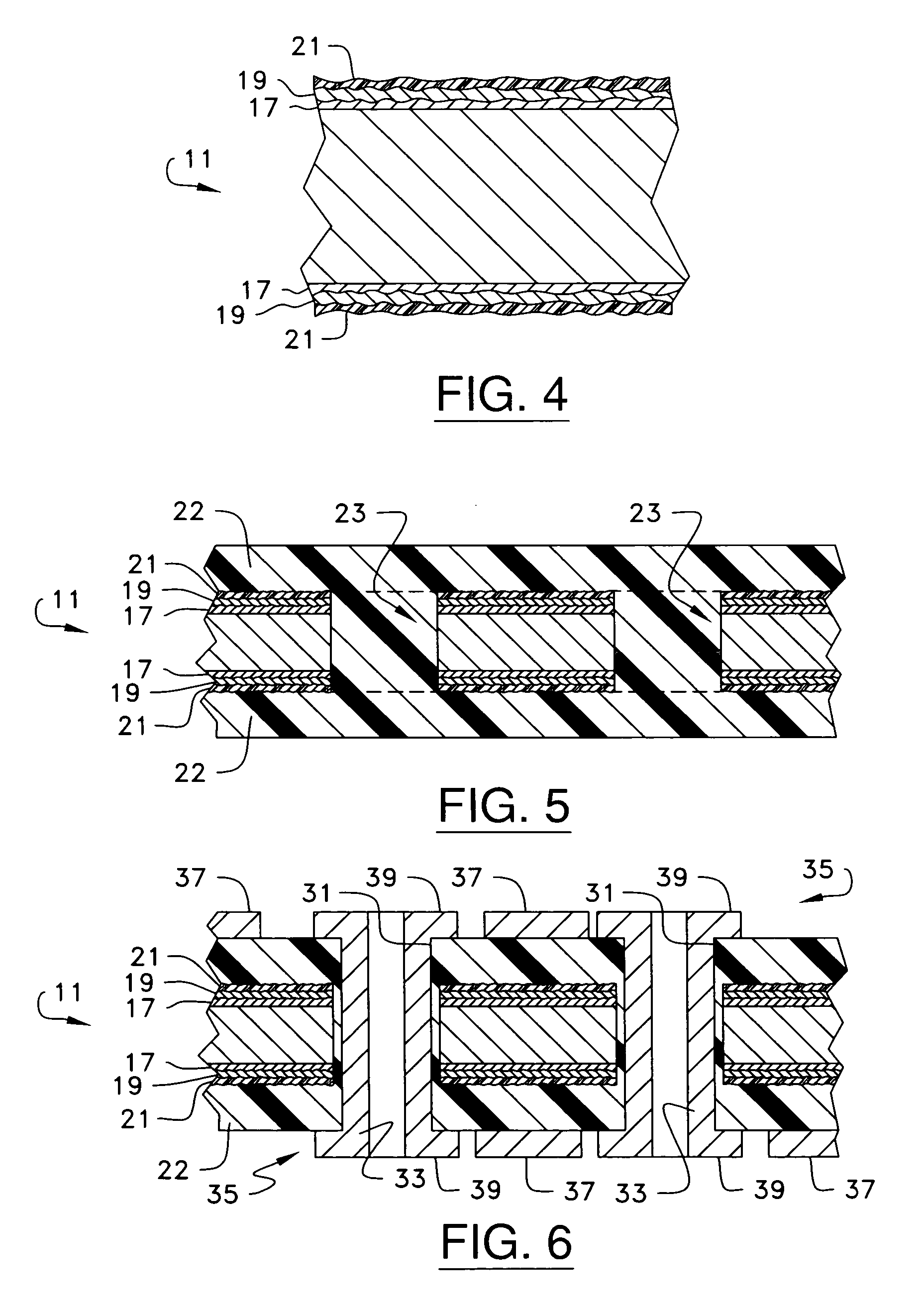Method of treating conductive layer for use in a circuitized substrate and method of making said substrate having said conductive layer as part thereof
a technology of circuitized substrates and conductive layers, applied in printed circuits, electrical equipment, printed circuit aspects, etc., can solve the problems of only being considered suitable for mechanical polishing, affecting the smoothness of the surface of the substrate, so as to increase the roughness and reduce the cost. , the effect of increasing the roughness
- Summary
- Abstract
- Description
- Claims
- Application Information
AI Technical Summary
Benefits of technology
Problems solved by technology
Method used
Image
Examples
Embodiment Construction
[0034] For a better understanding of the present invention, together with other and further objects, advantages and capabilities thereof, reference is made to the following disclosure and appended claims in connection with the above-described drawings. Like figure numbers will be used from FIG. to FIG. to identify like elements in these drawings.
[0035] By the term “circuitized substrate” as used herein is meant to include substrates having at least one dielectric layer and at least one metal conductive layer. Examples of dielectric materials include fiberglass-reinforced epoxy resins (some referred to as “FR-4” dielectric materials in the art), polytetrafluoroethylene (Teflon), polyimides, polyamides, cyanate resins, polyphenylene ether resins, photoimageable materials, and other like materials wherein the conductive layer(s) is(are) comprised of metal such as copper (preferably electrodeposited copper foil as defined herein-above), and function as a power, signal and / or ground lay...
PUM
| Property | Measurement | Unit |
|---|---|---|
| thickness | aaaaa | aaaaa |
| thickness | aaaaa | aaaaa |
| roughness | aaaaa | aaaaa |
Abstract
Description
Claims
Application Information
 Login to View More
Login to View More - R&D
- Intellectual Property
- Life Sciences
- Materials
- Tech Scout
- Unparalleled Data Quality
- Higher Quality Content
- 60% Fewer Hallucinations
Browse by: Latest US Patents, China's latest patents, Technical Efficacy Thesaurus, Application Domain, Technology Topic, Popular Technical Reports.
© 2025 PatSnap. All rights reserved.Legal|Privacy policy|Modern Slavery Act Transparency Statement|Sitemap|About US| Contact US: help@patsnap.com



